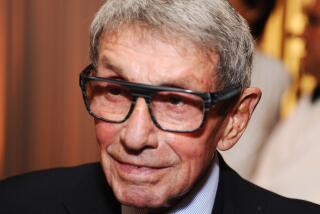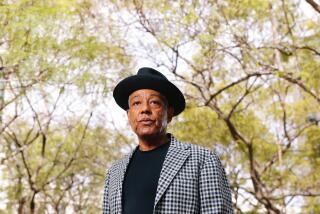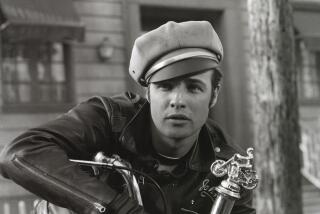A Man Who Colored Outside the Lines
- Share via
When we began work on “The Chase” in 1966, I had never met Marlon Brando. I’d seen him on stage, of course, in “Streetcar” in 1947, and it had been electrifying. As I watched from the audience that night, I felt I was seeing the beginning of true acting; I hadn’t seen anything like it before. The American theater at that time was still in the grip of a certain kind of mannered English tradition -- lovely pronunciation and perfect posture and Tallulah Bankhead and conservative attitudes, and then all of a sudden there was Brando, bringing something to the stage that came right out of your own life.
When it came time to meet him nearly 20 years later, I wouldn’t say I was awed, but I was a little timid. I was in my mid-40s; he was a couple years younger. We met early on, during pre-production. I was living in Sammy Davis Jr.’s house on Sunset Plaza Drive while Sammy was in New York performing “Golden Boy.” Marlon lived on Mulholland Drive. It was in the aftermath of the Watts riots.
By this time, he’d developed a terrible reputation in movies. A few years before, he had made “Mutiny on the Bounty,” and he’d been described as an egotistical ogre on the set. As it turned out, he was nothing of the sort. He was impish, a practical joker. He was extraordinarily insightful about people -- and characters. He was not at all intense; quite the opposite.
As an actor, he was an anarchist. He was terribly original, and the idea of repetition was abhorrent to him. Literally, each take of the same scene would be done differently. Something would occur to him that hadn’t been present in the previous take; he’d diminish something or expand it. He’d change the words, or he’d change his voice or intonation. Or he’d move differently. The camera operator, who kept expecting Brando to do the same thing he’d done in the previous take, had a hard time following him. But the performance was never the same; in his lack of predictability, he was unlike any other actor I ever saw work.
Ten years later when I directed him again in a Western called “The Missouri Breaks,” Marlon played a character known as “the regulator,” a hired assassin.
When we sat down for the first time to discuss the character he said to me, “Can I make him an Indian?” I laughed and said, “No, Marlon, you can’t make him an Indian.” Then he said, “Can I do it with an Irish accent?” I said I didn’t think that made sense, either. We talked about a variety of ways to play the character, and then finally he said, “What about all of it? How about I’m different every time you meet me so there’s no predictability about the character?” I said, “Marlon, that’s perfect.”
And that’s exactly what he did. The character was an Indian. The character had an Irish accent. And by the time we reached the last killing in the film, where he had to murder Harry Dean Stanton, Marlon said to me -- I remember, he was sitting on horseback when he said it -- “This time, I want to play a woman.” So the costume people went rushing into town and came back with a big housedress -- it had to be big because by that time he was already of great girth. Then he says, “I want a bonnet.” Then he cooed, “Granny wants a bonnet” in a little-old-lady voice.
That was typical. He wouldn’t stay within the lines. He didn’t understand the concept.
For a director, that’s exciting. It’s thrilling. All too much of directing is militaristically simple. You tell people to come in here or to go over there or to say this or to do that or to sit down. Those are dumb directions. With Marlon there was no such thing. You didn’t even begin to talk that way. You just gave him a set of circumstances and let him walk onto the set and watched him find the material on his own terms. And you’d never see it the same way again.
Arthur Penn is the director of many movies, including “Bonnie and Clyde,” “Alice’s Restaurant” and “Little Big Man.” He directed Marlon Brando in “The Chase” (1966) and “The Missouri Breaks” (1976).


